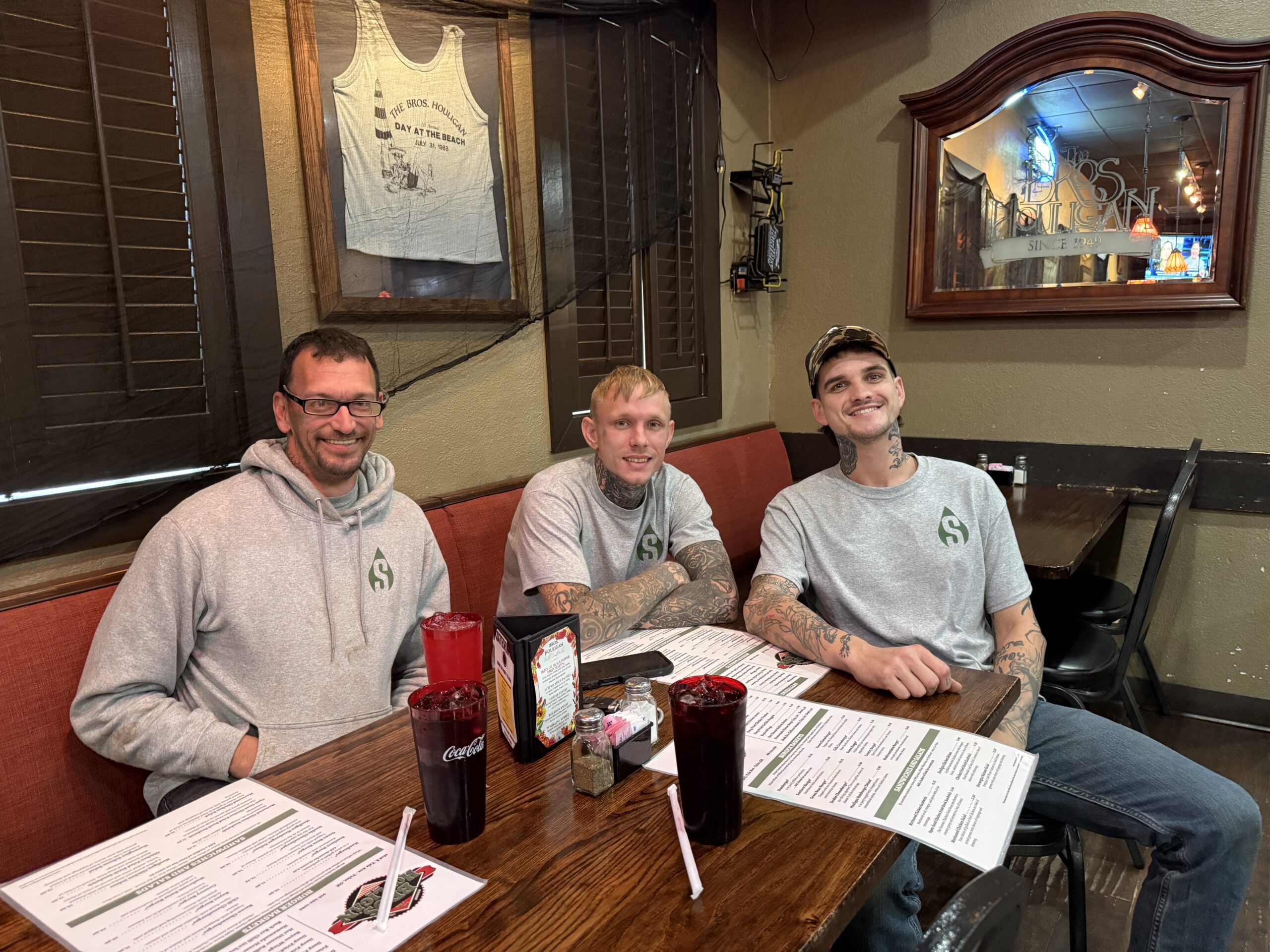How Long Do Water Heaters Last in Oklahoma?
Water heaters are one of the most relied-on appliances in any home. From showers and laundry to dishwashing and handwashing, hot water keeps your daily routine running. But like any system in the home, water heaters have a limited lifespan. If you live in Oklahoma, several factors can influence how long your water heater lasts; from the mineral content in the water to the way your system is installed and maintained. Knowing what to expect from your water heater and how to extend its service life can help you avoid costly breakdowns and poorly timed replacements.
Water heater lifespan is not a guess; it depends on real conditions and how the system is used. In Oklahoma, where both weather and water quality vary by region, homeowners need to be proactive about maintenance and recognize the signs of aging equipment. Whether you have a traditional tank model or a tankless system, understanding its lifespan will help you plan for repairs, upgrades, or replacement before a problem catches you off guard.
Average Lifespan of a Water Heater in Oklahoma
Most standard tank water heaters in Oklahoma last between 8 and 12 years. This lifespan can vary based on usage, maintenance, and the quality of installation. Tankless water heaters tend to last longer, often 15 to 20 years, especially when maintained properly. However, these are general timelines, not guarantees. Your actual experience may be shorter or longer depending on how the unit is cared for and what kind of water runs through your system.
Oklahoma’s water quality can influence these numbers. In some areas, hard water with high mineral content puts extra stress on the water heater. These minerals can build up in the tank over time, reducing efficiency and increasing corrosion inside the system. Homes that don’t have a water softener or filtration system may see sediment buildup that shortens the life of the heater. Left unchecked, this buildup can cause overheating, reduce capacity, and even lead to early failure.

Installation quality also plays a large role in how long a water heater lasts. A system that’s undersized for the home, installed with poor connections, or placed in a cramped or unventilated space is more likely to experience issues. On the other hand, a professionally installed system, sized appropriately and well-ventilated, will perform more consistently and last closer to the high end of the expected range. Getting your system installed by a licensed plumber with experience in Oklahoma homes helps you get more out of your investment.
Common Signs Your Water Heater Is Nearing the End
Most water heaters don’t fail overnight without warning. There are clear signs that a unit is wearing out, and catching them early can prevent water damage or loss of hot water. One of the first things many homeowners notice is a reduction in hot water supply. If your showers are getting colder faster or you’re running out of hot water during daily use, it may be a sign that the unit is losing efficiency or struggling to keep up with demand.
Another major warning sign is rust-colored water, especially from hot taps. This can be an indication of corrosion inside the tank or within the pipes leading from the heater. While sometimes it’s a plumbing issue, persistent rust when using hot water often signals a failing anode rod or internal damage to the tank. Noise is another concern: popping, rumbling, or hissing sounds can come from sediment buildup at the bottom of the tank. These minerals harden and make the unit work harder, shortening its life.
Visible leaks or moisture around the base of the heater are urgent red flags. While a little condensation may be normal, any pooling water should be inspected right away. A leaking tank often means the internal lining has failed, and the unit likely needs to be replaced. If your heater is over a decade old and showing any of these symptoms, it’s smart to call a licensed plumber and get a professional assessment. Replacing the unit on your terms is always better than facing an emergency with no hot water and a flooded utility closet.
Factors That Affect Water Heater Lifespan in Oklahoma
Oklahoma’s varied water conditions are a major factor in how long water heaters last. Some areas have moderately soft water, while others, especially parts of Tulsa and Broken Arrow, have very hard water. Hard water is full of minerals like calcium and magnesium that can build up inside the tank or in tankless systems. Over time, this buildup insulates the heating elements or heat exchanger, making the unit work harder and shortening its lifespan.
Temperature settings also influence how long your water heater lasts. Many homeowners set their water heater above 130 degrees, either out of habit or to ensure hot water during peak use. Higher temperatures increase wear on internal parts and make sediment build up faster. Keeping your water heater set between 120 and 125 degrees strikes a better balance between performance and efficiency. This range still delivers safe, comfortable hot water while reducing stress on the system.

Usage patterns in the home also play a role. A household of two will put less demand on a water heater than a household of six. The more frequently the system cycles on and off, the more wear it experiences. If your water heater is constantly working to meet high demand, it may age faster than one in a lower-use household. Choosing the correct size system during installation helps prevent overworking and early breakdowns. A plumber can help evaluate your usage and recommend the right tank or tankless model.
Tank vs. Tankless: Lifespan and Performance
Tank and tankless water heaters differ not just in how they operate, but in how long they tend to last and how much care they require. Tank-style heaters store a fixed amount of water, usually 40 to 50 gallons, and keep it heated throughout the day. Because they run more frequently and hold hot water for long periods, they tend to wear out faster. Internal components like the anode rod, thermostat, and dip tube can corrode or fail over time.
Tankless systems, by contrast, heat water on demand. They don’t store hot water, which eliminates the risk of tank corrosion and standby heat loss. This design allows tankless systems to last longer under proper conditions, often up to 20 years or more. However, they require more consistent maintenance, especially in areas with hard water. Descaling the system annually helps maintain performance and avoid blockages in the heat exchanger.
Each system type has pros and cons. While tank systems are usually less expensive upfront, they may need replacement sooner. Tankless units cost more initially but offer energy savings and longer life if properly maintained. Your choice may depend on home size, usage, and budget, but understanding the expected lifespan helps you make a smarter decision either way.
How to Extend the Life of Your Water Heater
One of the best ways to get more years from your water heater is through regular maintenance. For tank-style systems, flushing the tank annually helps remove sediment that builds up over time. This not only improves heating efficiency but also prevents damage to the heating elements and tank liner. Replacing the anode rod every few years also helps reduce corrosion inside the tank and keeps rust from forming prematurely.
For tankless systems, descaling the unit once a year removes mineral buildup and ensures the heat exchanger works properly. Keeping air intake and exhaust vents clear also helps avoid overheating and shutdowns. Regular maintenance helps both types of water heaters run more efficiently and reduces the chances of costly repairs or early replacement.
Installing a water filtration or softening system can also improve the performance and lifespan of your water heater. By reducing the mineral content in your home’s water supply, you lower the chance of sediment and scale buildup. This is especially useful in parts of Oklahoma where hard water is a constant issue. A filtration system helps protect not just the water heater, but your entire plumbing system.
Another simple way to protect your water heater is by checking connections for leaks or corrosion every few months. Make sure the area around the heater stays dry and that all valves and fittings are secure. Catching small issues early can prevent major damage later. Keeping a consistent maintenance schedule and working with a licensed plumber are key to maximizing the value of your system.
When to Replace Your Water Heater
Even with proper care, no water heater lasts forever. If your system is more than 10 years old and showing signs of wear, it’s time to start planning for a replacement. Waiting too long increases the risk of failure, water damage, and unexpected costs. Many homeowners wait until their unit fails completely, which often leads to rushed decisions and higher prices.
Replacing a water heater before it breaks allows you to evaluate your options carefully. You can choose between a tank or tankless system, update your setup to meet current code, and avoid dealing with an emergency during a busy time. It also gives you time to apply for financing, get multiple quotes, or plan around other home improvement work.
Your plumber can help you assess the current condition of your system and recommend the best timeline for replacement. In some cases, repairs can extend the life of the system for another year or two, while in other cases, replacing the unit is the more cost-effective solution. Don’t wait until hot water runs out during a holiday or family gathering; start planning now while you still have full control.
Water heaters in Oklahoma typically last 8 to 12 years for tank models and up to 20 years for tankless units, depending on water quality, usage, and maintenance. Hard water, poor installation, and heavy demand can shorten that lifespan, while regular service, proper sizing, and professional installation help extend it. Knowing how long your system should last helps you plan ahead, avoid emergencies, and get the most value out of your investment.
If you’re unsure about the age or condition of your water heater, it’s a good idea to schedule a professional inspection. A licensed plumber can help you identify issues early, perform needed maintenance, or guide you through the replacement process. At Sargent’s Plumbing & Drain, we install and service water heaters across Broken Arrow, Tulsa, and nearby areas. Whether you need a repair, a replacement, or just honest advice, our team is ready to help you make the right call. Don’t wait for a failure; take control of your home’s hot water before it becomes a problem.




